
15-01-2026 15:55
 Lothar Krieglsteiner
Lothar Krieglsteiner
this one is especially interesting for me because

17-01-2026 19:35
Arnold BüschlenHallo, ich suche zu Cosmospora aurantiicola Lite

16-01-2026 00:45
Ethan CrensonHi all, On decorticated hardwood from a New York

18-01-2026 12:24
Hello.An anamorph located on the surface of a thin

08-12-2025 17:37
 Lothar Krieglsteiner
Lothar Krieglsteiner
20.6.25, on branch of Abies infected and thickened

10-01-2026 20:00
Tom SchrierHi all,We found picnidia on Protoparmeliopsis mur
 Hello,
Hello, in this ascomycete everything seems to fit well to be Miladina lecithina, but the spores aren´t filled by many small guttules, there are usually 2 big guttules (or 1 guttule from 2 fused ones). Is it OK?
Apothecia 0,5-3 mm wide, orange, sessile, plane, rounded, without hairs, with a distinct margin.
Spores 19,5-22,5 x 10,5-12 micrometers, ellipsoid, with small warts, hyaline.
Asci 210-280 x 17-22 micrometers, cylindric, containing 8 spores in 1 row, not blue in Lugol.
Paraphyses 2,5-3 micrometers broad, apex broadened up to 7,5 micrometers, septate.
On wet wood in a small brook, Georgia, 25/6/2014.
Zuzana
By the way, the correct name for this fungus is Miladina lechithina (Cooke) Svrcek.
LECHITINA, not LECITHINA, as Cooke wrote.

The name is interesting... I though "lecithina" is derived from the colour of apothecia resembling yolk - and the Latin word for yolk is lecithos.
Z.
Autant Index Fungorun que MycoBank acceptent l'orthographe : Miladina lecithina (Cooke) Svrcek. Mycobank relève qu'il y a deux orthographes ! Si l'étymologie ce réfère à l'œuf, respectivement à la lécithine qu'il contient, ce qui est très probable de par la couleur du champignon, l'orthographe adopté par Svrcek est correcte. Mais on trouve aussi écrit « léchitine » ce qui me semble être une erreur !
Je pense cependant que ce problème est mineur !
Comme le dit et le montre notre ami Enrique, normalement, chez cette espèce les ascospores sont remplies de gouttelettes, mais il peut arriver qu'elles se réunissent, soit avec l'âge soit sous l'effet de conditions exogènes. Il faut, dans une détermination, toujours prendre en compte la possibilité que les guttules ou gouttelettes puisse s'être réunies.
Il s'agit bien de Miladina lecithina (Cooke) Svr?ek
Amicalement
René
Annexes : photo et dessins

This problem was discussed in 2002 in another forum (Mycologia Europaea).

Z.
Dear friends,
My main aim on each issue regarding fungal names is nomenclatural stability and as pointed out to you in one of my previous e-mails I sent my nomenclatural study, to determine the correct spelling for the original epithet lechithina (in my opinion correctable to lecithina) used by Cooke in Peziza lechithina, to Vincent Demoulin member of the editorial committee of the ICBN in the following CODES: Leningrad (1978), Sydney (1982), Berlin (1988), Tokyo (1994), Saint Louis (2000), Vienna (2006) and the ICN of Melbourne (2012), chair of the committee of nomenclature of fungi until Melbourne Congress and member of the General Committee of Nomenclature since Melbourne Congress.
So, on 18 august 2017, I wrote to Vincent Demoulin:
Dear Vincent,
I hope everything goes well for you, because we are not in communication for a long time.
The new case is an epithet that Melot considers uncorrectable. It is the epithet of the original Peziza lechithina Cooke. However, I consider it correctable taking into account that this name was coined after the Greek word ??????? due to the "egg yellow" (Grevillea) or "vitellinus" (Mycographia) color according to Cooke's description and plate, even if Cooke didn't mention the etymology of the name.
I consulted a lot of works about transliteration and I have found no proof of transliteration of Kappa into "ch". This include Latin and Greek Dictionaries, Stearn (Botanical Latin), Clements (Greek and Latin in Biological Nomenclature), Gilbur Brown (Composition of Scientific words), Emma Short & Alex George (A primer of Botanical Latin with Vocabulary), of course your excellent paper on rhacodes, a proposal for transliteration of the Bacteriological Code, etc., etc.
Therefore I consulted two professors (one of Latin and one of Greek) about the possibility of transliterate the letter Kappa into ch and their response was that they didn't know any case of transliteration of Kappa into ch or kh into Latin. Kappa was transliterated usually c, rarely k at the beginning of a word and sometimes q before the letter "u", but never ch.
In addition, they informed me that the Greek il jar ??????? containing perfume or oil was transliterated lecythus into Latin, and also that no word can be found in Latin or Greek with the root "lechi" meaning egg-yolk color.
I have also found that a genus of plants is called Lecythis whose etymology is from oil-jar (???????) due to the shape of its fruits.
If you put the root lechi- in the window of Mycobank you only will find a result: Cooke's epithet, nothing more.
And still more, Gobley (1950) who discovered the lecitine substance was a French researcher who wrote literally: "Je propose de donner au premier le nom de lécithine (de ??????? jaune d'oeuf)".
Finally, in the dictionary of the Royal Academy of the Spanish language online we can find the entry: "lecitina. Del francés lécithine y este del griego ???????".
Well, the problem is that in 2002 Melot pointed out in his forum Mycologia Europaea that the original epithet lechithina cannot be corrected.
I was interested in his arguments and I ask a friend for making again in this forum the question if the correct epithet is lechithina or lecithina in June of this year and Melot replied:
[J. M.] La lettre grecque qui suit ici le e dans ce mot transcrit du grec est un kappa, lequel se transcrit habituellement c (parfois k). Cela dit, le Code n'impose aucune norme de translittération du grec et c'est se montrer un peu strict que de considérer que l'orthographe de Cooke (lechithina) doit être rectifiée (même si elle nous chiffonne quelque peu).
I deeply disagree with this analysis and conclusions without a solid argument.
I agree with you Vincent that transliteration also has rules, and botanical tradition cannot be ignored either.
Of course, Art. 60.1 point out clearly that the original spelling must be maintained except for typographical or orthographical error and in my opinion a transliteration never used is an orthographical error, as it is also, for example, to use glabrus instead glaber. One cannot do what he wants because it exists botanical tradition and transliteration rules. Otherwise nomenclature would be a chaos. However if one can probe that other uses of the same letter or epithet were used (sylvaticus-silvaticus, campester-campestris, then one could defend an obsolete or restricted use of a spelling but in this case I (and no one) have still not found it.
For this I also agree in your interpretation of Art. 23.2 that "even be composed arbitrarily" must be understood to special cases as anagrams, vernacular names or similar not when an author uses Latin or Greek words and introduces an error in them.
Another important argument to correct lechithina to lecithina is Preamble 10 of ICN: "in the absence of a relevant rule or when the consequences of rules are doubtful, established custom is followed". Clearly in this case the custom is to transliterate kappa into "c".
Melot's commentary was also posted in the forum ascofrance.org, a very important forum on that group of fungi, and this doesn't contribute to nomenclatural stability and above all taking into account that the two official repositories (mycobank and index fungorum) also have corrected the epithet to lecithina and both consider the original lechithina and orthographic variant.
For this reason, I told them that I was going to consult you to know your opinion about the correct epithet in this case as you is a prestigious nomenclaturist expert in orthography, and maybe if you send my your opinion and I send it to the ascofrance.org forum we can avoid that the original (but wrong) epithet lechithina be used.
So, I would be very grateful if you send me your opinion, comments, etc., and you give me your permission to send them to the forum ascofrance.org.
Sorry for this long message but I want you to know that I have studied the problem deeply.
Best regards. Luis.
On 21 August 2017 he replied me:
Dear Luis,
I am just back from holidays. At first sight I entirely agree with you. In the next few days I will look if I can find more arguments.
Vincent
On 2 September he replied again:
Dear Luis,
I have completed my review of the case with the collaboration of my son and entirely agree with your position;
My son has found an additional argument. In Greek two consecutive syllables cannot start with a rough consonant. I would phrase it like this: "One should also note it is impossible to have a Greek word lechithos, for in Greek, when two consecutive syllables in the same word could start by a rough consonant, the first one changes to the smooth correspondent. For example in the declination of thuo one will find etethen and not ethethen".
Vincent Demoulin: Institut de Botanique B. 22, Université de Liège, Belgium.
Luc Demoulin: Départment des Sciences de l'Antiquité, B. A1, Université de Liège, Belgium and librarian at the Patrimonial (Ulisse Capitaine) Library of the city of Liège.
Note that this is a comprehensive and deep study of this nomenclatural issue and not only an opinion and that the conclusion is that the original epithet lechithina must be corrected to lecithina is completely shared by the excellent and experienced nomenclaturist Vincent Demoulin.
So, I would be very grateful if you can publish this study (the text above) in which all (etymological, philological, botanical tradition and nomenclatural) evidences claim that the correct epithet is lecithina in your forum ascofrance.org to contribute to nomenclature stability.
Best regards. Luis.
It seems that Greek symbols of letters cannot be posted. So, I inform you that the questions marks related to the egg yellow color correspond to the Greek word lecithos and those related to the oil jar correspond to the Greek word lecythos.


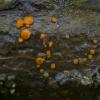
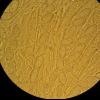
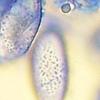
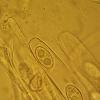
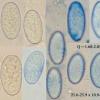
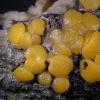
 Miladina-lechithina-M-1-0001.jpg
Miladina-lechithina-M-1-0001.jpg